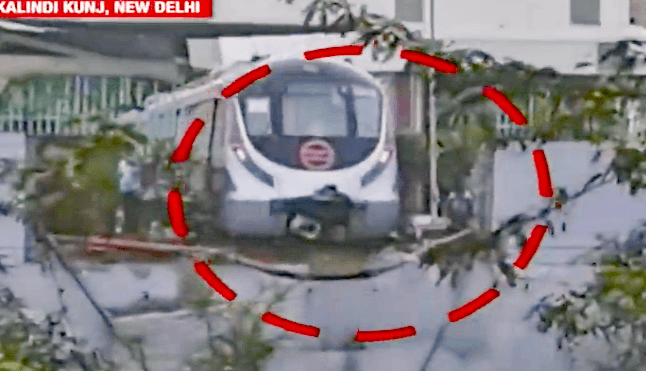New Delhi's driverless train; complete with... driver
December 27, 2017
on
on

On Christmas day, the Indian Prime Minister officially opened a new section to New Delhi's metro system which will use automatic driverless trains. For the next 1 or 2 years, however, a driver will still be required on board. How come?
India’s Prime Minister Narendra Modi completed the inaugural voyage on a short section of the 12.6-kilometer Magenta Line metro that connects the southern part of New Delhi, over a river, to the satellite city of Noida where many IT companies are based. According to the Delhi Metro Rail Corp. a driver will still be required for the first year or two of operation of this highly automated train system. In the future, however, it could be operated driverless as originally planned.
The decision to use a driver came after an unplanned incident in the depot just a week ago when the new train ploughed through a wall. Luckily the only casualties were the brickwork and the tram’s bodywork but the event understandably raised doubts about the system’s overall safety and reliability. According to the Delhi Metro the error was traced back to a mistake by a maintenance engineer who had forgotten to reactivate the braking system after it had been disabled during maintenance. The train rolled down a ramp and demolished a wall.
The Magenta Line is the latest section of the Delhi Metro System which opened 15 years ago and covers more than 200 kilometers. The metro should ease rush-hour congestion for New Delhi commuters and help reduce vehicle emissions; New Delhi suffers from poor air quality and traffic congestion in common with many industrialized cities in China.
India’s Prime Minister Narendra Modi completed the inaugural voyage on a short section of the 12.6-kilometer Magenta Line metro that connects the southern part of New Delhi, over a river, to the satellite city of Noida where many IT companies are based. According to the Delhi Metro Rail Corp. a driver will still be required for the first year or two of operation of this highly automated train system. In the future, however, it could be operated driverless as originally planned.
The decision to use a driver came after an unplanned incident in the depot just a week ago when the new train ploughed through a wall. Luckily the only casualties were the brickwork and the tram’s bodywork but the event understandably raised doubts about the system’s overall safety and reliability. According to the Delhi Metro the error was traced back to a mistake by a maintenance engineer who had forgotten to reactivate the braking system after it had been disabled during maintenance. The train rolled down a ramp and demolished a wall.
The Magenta Line is the latest section of the Delhi Metro System which opened 15 years ago and covers more than 200 kilometers. The metro should ease rush-hour congestion for New Delhi commuters and help reduce vehicle emissions; New Delhi suffers from poor air quality and traffic congestion in common with many industrialized cities in China.
Read full article
Hide full article


Discussion (0 comments)